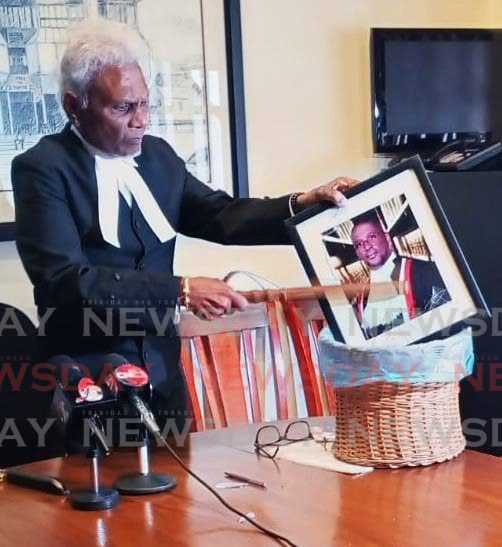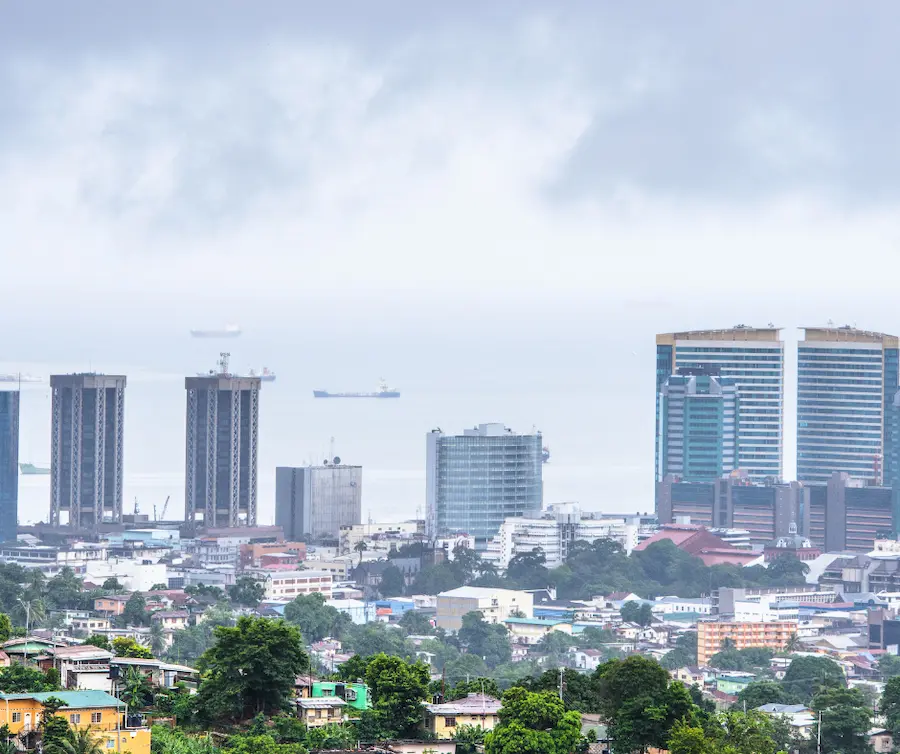

A senior member of the Criminal Bar Association (CBA) has distanced himself from a call by the association’s president Israel Khan, SC, for an independent probe into Chief Justice Ivor Archie’s conduct in the matter involving High Court judge Marcia Ayers-Caesar.
In a statement on April 4, John Heath, SC, said he was of the firm view that Khan’s actions and utterances were his own and not that of the criminal bar.
Health said, “As a member of the criminal bar, I do not recall there being any meeting in which the criminal bar would have sought to call upon the Prime Minister to initiate section 137 proceedings against the Chief Justice, nor am I am aware of the criminal bar discussing whether the Chief Justice should be investigated for misbehaviour in public office.
“I also cannot recall soliciting the views of our membership on either issue. I, of course, respect Senior Khan's right to express his views.”
Heath was responding to Khan’s “symbolic” removal of a framed portrait of the CJ at his Justitia Omnibus Chambers on April 3, destroying it. Khan had also staged a one-man protest on the steps of the Hall of Justice, Port of Spain, calling on Archie to resign.
>
In brief remarks before he destroyed the photograph, Khan said he sent a letter to Prime Minister Stuart Young on behalf of the Criminal Bar Association (CBA), calling on him to invoke section 137 for an independent probe.
Khan insisted he was not acting on his own but on behalf of the CBA.
“We are not saying to fire him. What we are saying to do is set up an independent tribunal to find out whether he should be fired,” he said.
“We are saying give him the right to be heard and explain why he told the president she (Ayers-Caesar) resigned voluntarily. Let him explain why he told her that you can go back and complete the matters in the magistrate court and then we would reappoint you.”
Contacted on Friday, Khan said he respected Heath’s position.
“I would have done the same. I have great admiration for him and is of impeccable character and he has a right to disagree.”
However, Khan said the majority of the CBA’s executive had agreed on the approach to the Prime Minister calling on him to trigger section 137.
He admitted that the destruction of the photograph and his one-man protest were not sanctioned by the CBA and were of his own accord. Khan insisted he had no agenda against the Chief Justice and posed his own question to his junior, “Does he (Heath) think there should be a section 137 investigation?”
In a statement, Khan said since his protest and his destruction of the CJ’s portrait, he has received praise and condemnation from the public and lawyers.
>
“Many of my detractors have accused me of bringing the administration of justice into disrepute by attacking the Chief Justice. And this, they all say, is a contempt of court.”
However, Khan was adamant, “Yes, it is a contempt of court to bring the Chief Justice into disrepute: and it is a contempt of court to scandalise the Office of the Chief Justice.
“The law holds that attempts to deprecate the authority of courts themselves are quasi-criminal acts and that scandalising a judge (much more a Chief Justice) is a contempt of court and a lawyer can be disbarred from practising before the courts if guilty of such an offence.”
Khan boldly declared his protests were “intended to lower the Chief Justice Archie esteem and deprecate his authority as Chief Justice and yes, it was my intention to scandalise him.
“Yes, my protests are actions calculated to bring Chief Justice Ivor Archie into contempt by the public and to lower his authority as the head of the judiciary in this country.
“Am I in contempt of court, or am I walking the talk while others who should be speaking out are just mocking pretenders?”
Earlier, Khan pointed out the position of other bodies representing lawyers, including the Assembly for Southern Lawyers and the Law Association.
The ASL has called for constitutional accountability and recommended that an independent tribunal be formed to investigate the Chief Justice’s role in the matter.
The body also recommended independent enquiries by the President into the institutional functioning and procedural integrity of the Judicial and Legal Service Commission (JLSC) in 2017 and a parliamentary review of the commission’s accountability framework.
>
The Law Association’s position was that the Privy Council’s ruling reinforced the principle of security of tenure for judges and the proper conduct of judicial office-holders. It also noted that the JLSC and Chief Justice's failure to recognise this independence was a matter of "serious concern."
"Security of tenure ensures that judicial officers are free from external pressures and interference, whether exerted by the Executive, the JLSC, which appoints them, or the Chief Justice who leads them.
"Equally concerning is the fact that, because of such failure, the matters which gave rise to the litigation between Justice Marcia Ayers-Caesar and the JLSC remain unresolved."
In their findings, the Privy Council agreed with the Appeal Court that Ayers-Caesar was improperly forced to resign but it also ruled that she could have been properly subjected to a section 137 probe for her actions leading up to her forced removal by the JLSC.
The Privy Council acknowledged that her failure to fully disclose the extent of her backlog was “capable of falling within the scope of section 137,” but maintained any disciplinary proceedings against her should have followed the correct constitutional process.
“Pressuring a judge to resign by holding out the threat of disciplinary proceedings, as the commission did in the present case, circumvents the constitutional safeguards laid down in section 137 and undermines their purpose.”


